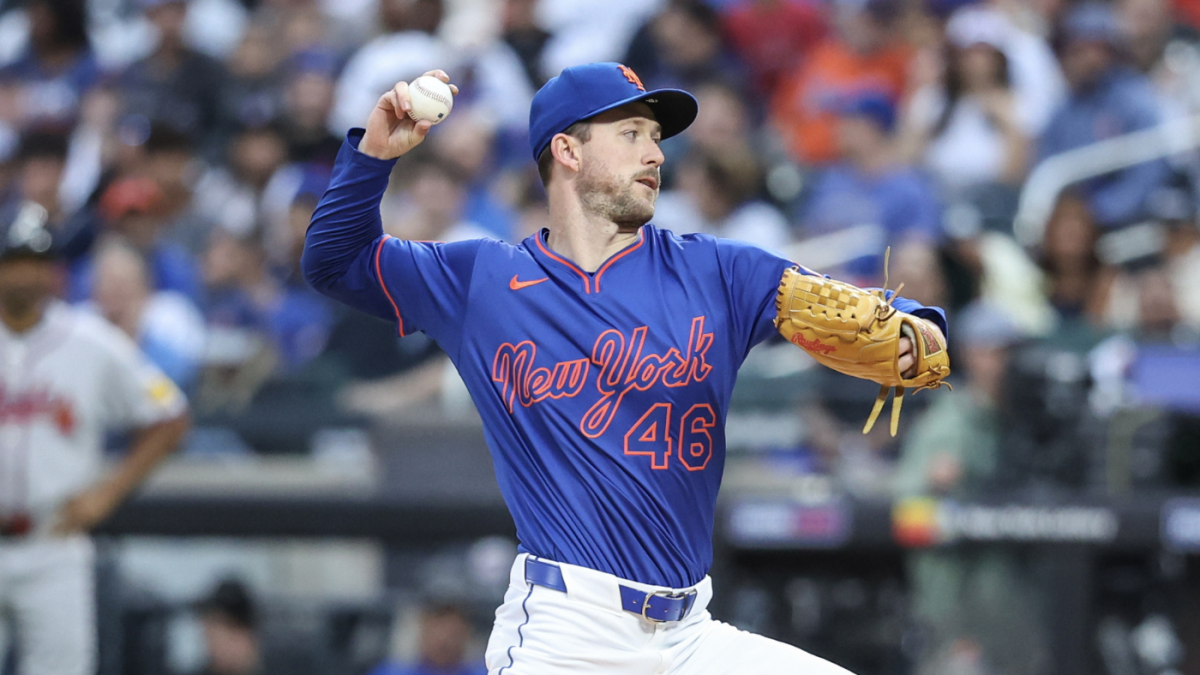The Mets’ recent victory over the Braves was overshadowed by a grim moment in the third inning when Griffin Canning, one of the team’s most reliable starters, suffered a potentially season-ending injury. The incident, which occurred on a routine play, has left the Mets facing significant challenges as they navigate the aftermath of losing a key pitcher. The injury not only disrupts the team’s rotation but also raises concerns about the psychological impact on the clubhouse and the strategic adjustments required to maintain their position at the top of the National League East.
Canning’s injury unfolded in a way that highlighted the fragility of professional athletes. As he attempted to cover first base, his left foot planted awkwardly at the edge of the mound, causing immediate pain. The Mets initially described the injury as a left ankle issue, but speculation quickly turned to a more serious Achilles tendon injury—a diagnosis that would have severe implications for Canning’s season and the Mets’ playoff aspirations. The Achilles tendon is crucial for pitchers, as it plays a vital role in the explosive movements required to deliver pitches. A tear in this tendon often results in surgery and a lengthy rehabilitation process, during which a player’s performance may never fully return to pre-injury levels.
Before his injury, Canning was pitching exceptionally well, contributing to the Mets’ climb to first place in the division. His performance was a stabilizing force for a rotation that has already dealt with injuries to Frankie Montas and Sean Manaea. The loss of Canning now forces the Mets to rely even more heavily on their bullpen and younger pitchers, who may not be ready for the increased workload. The ripple effect of this injury extends beyond the pitching staff, as the entire team must adjust to a new dynamic. The psychological toll of such an injury cannot be underestimated, as players and coaches alike must now grapple with the uncertainty of Canning’s absence and the potential long-term consequences for the team’s success.
The Mets’ pitching depth will be tested in the coming weeks as they seek to fill the void left by Canning. Manager Carlos Mendoza and pitching coach Jeremy Hefner must make critical decisions about how to manage the rotation. Options include piggybacking relievers, utilizing bullpen games, promoting prospects from Triple-A, or exploring early trade opportunities. Each of these strategies carries risks, such as overworking relievers or rushing young pitchers who may not be prepared for the rigors of Major League Baseball. The Mets must carefully weigh these factors to avoid further setbacks that could derail their season.
Historical examples provide both cautionary tales and inspiration for how teams can overcome midseason injuries. The 2021 Atlanta Braves, for instance, lost their ace starter but managed to retool their roster at the trade deadline, ultimately winning the World Series. Conversely, other teams have seen their playoff hopes dashed by injuries that they were unable to recover from. The Mets’ ability to adapt and respond to this challenge will determine whether they can maintain their lead in the division or fall victim to the unforgiving nature of the NL East.
In conclusion, Griffin Canning’s injury serves as a stark reminder of the thin line between triumph and tragedy in professional sports. The Mets must now navigate the complexities of managing a rotation without one of their most reliable starters while also addressing the psychological and strategic implications of his absence. The decisions made in the coming days will be crucial in determining whether this injury becomes a mere footnote in the team’s season or a defining moment that alters their playoff trajectory. As the Mets continue their pursuit of a championship, they must remain resilient and adaptable, proving that even in the face of adversity, they can rise to the challenge.











